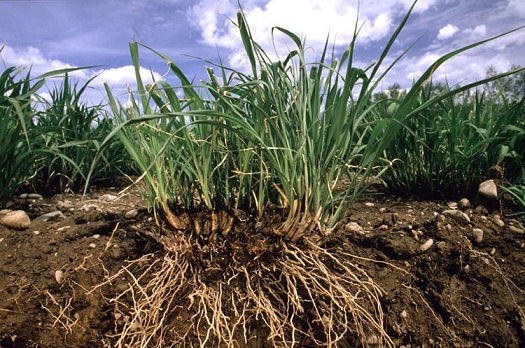
 |
|
There are two main kinds of root systems-fibrous and taproot. Grass is an example of a plant with a fibrous root system. It has many slender roots of about the same size that spread out in all directions. A plant with a taproot system has one root that is larger than the rest. Carrots and radishes have taproots. Taproots grow straight down, some as deep as 15 feet (4.6 meters). 
The root is one of the first parts of a plant that starts to grow. A primary root develops from a plant's seed and quickly produces branches called secondary roots. At the tip of each root is a root cap that protects the delicate tip as it pushes through the soil. Threadlike root hairs grow farther back on the root of the plant. Few of these structures are over 1/2 inch (13 millimeters) long. But there are so many of them that they greatly increase the plant's ability to absorb water and minerals from the soil. The roots of some aquatic plants float freely in the water. Other plants, such as orchids and some vines, have roots that attach themselves to tree branches. The roots of almost all land plants have a special relationship with fungi. In this relationship, known as mycorrhiza, fungi cover or penetrate the growing tips of a plant's roots. Water and nutrients enter the roots through the fungi. Fungi extend the plant's root system and improve the plant's ability to absorb water and minerals. Many botanists believe the first land plants developed millions of years ago from algae that lived in water. They think mycorrhizal relationships may have helped these plants to grow on land. 
Roots help prevent erosion of soil by wind and water. Soil is held in place by the dense network of roots of grasses, trees, and other plants. Plants called legumes, which include clover, peas, and soybeans, help enrich the soil. Swellings on their roots contain bacteria that convert nitrogen from the air into compounds. These compounds are useful to the plant. After the plant dies, the compounds become part of the soil. Next >>> Kinds of Roots >>> | Parts of Roots >>> | The Importance of Roots >>>
|
|
|---|